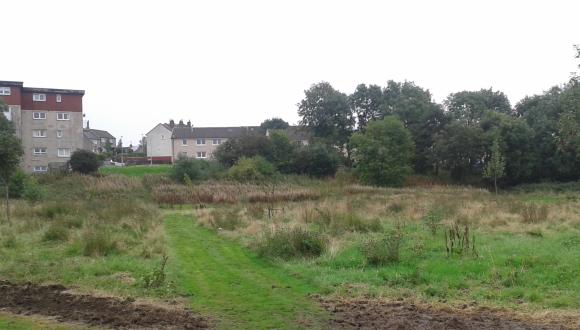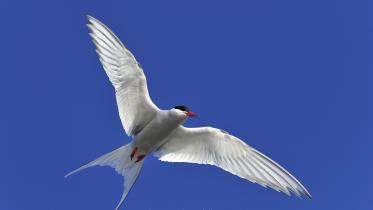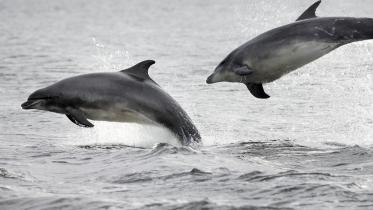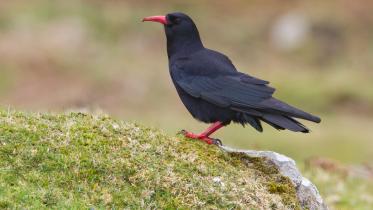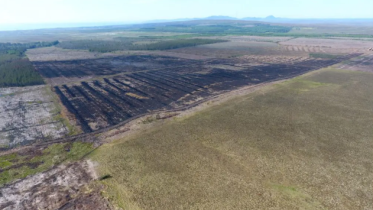Learning in local greenspace: Connecting young people with nature and their environment report
A fully designed and accessible pdf version of this report can be downloaded from the bottom of this page
Project Overview
This outdoor learning project was led by NatureScot as part of the Scottish Biodiversity Strategy Route Map to 2020. It directly supported 115 schools serving or located in disadvantaged communities across Scotland to access and use their local greenspace, resulting in:
- teachers taking learning outdoors more frequently in school grounds and local greenspaces and across most subject areas;
- improved teacher confidence in taking learning outdoors;
- pupils more engaged in learning outdoors;
- pupils better connected with nature.
Context
Outdoor learning can improve health and well-being, attainment and young peoples’ connection with nature. In recognition of these benefits, it has been an explicit part of the Scottish curriculum since the publication of Curriculum for Excellence through Outdoor Learning in 2010. Since 2013, the General Teaching Council for Scotland’s Standards for teachers have included a responsibility for all teachers to embed Learning for Sustainability (which includes Outdoor Learning) in their practice.
While many schools regularly use their grounds for learning, practice is patchy and tends to fall away significantly as pupils get older. NatureScot research also highlights that many of the schools located in or serving disadvantaged areas face greater challenges in providing for learning outdoors.
Theory and practice emphasises the value of offering pupils a progression of place for outdoor learning. This involves the provision of regular and frequent opportunities for pupils from 3 to 18 to play and learn outdoors in a range of places from establishment grounds to local greenspace, complemented by more occasional activities further afield.
Local greenspaces are an important resource for outdoor learning. They are found close to most schools in Scotland and are accessible and free. They are likely to be more diverse than school grounds, offering a greater diversity of learning opportunities. Engaging with local greenspace can foster in learners a sense of place and stewardship and encourage the wider community to engage and value their local natural spaces too. While impacting on the delivery of the latter stages of this project and its outcomes, the COVID pandemic has also emphasised, for many, the role our local greenspaces can play in our physical and mental wellbeing.
The benefits of nature connectedness are becoming increasingly recognised, including its positive impact on pro-environmental behaviours. The recent Dasgupta Review highlighted our failing and unsustainable relationship with nature. It concludes that “Every child in every country is owed the teaching of natural history, to be introduced to the awe and wonder of the natural world, and to appreciate how it contributes to our lives.”
The Project
In 2015, the Learning in Local Greenspace Project was proposed as one of the “Big Steps for Nature” in the Scottish Biodiversity Strategy Route Map to 2020. The project, led by NatureScot, ran between 2015 and 2021. It aimed to increase secondary and primary schools’ access to greenspace and nature for outdoor learning as part of the wider Learning for Sustainability agenda. An ambitious target was set of working with “100 schools in the 20% most disadvantaged areas across Scotland”
What we did
In collaboration with a range of local and national partners, we worked with over 115 schools and at least 500 teachers across 12 local authorities to remove or reduce the barriers to learning in local greenspace. This enabled over 6000 learners to access their local greenspace for learning and play over the life of the project. Numerous others will benefit from teachers’ increased skills and confidence in outdoor learning for years to come.
To be eligible for the project, a school had to be located in or serve one of Scotland’s 20% most disadvantaged communities. Specific schools were then identified to take part by education authority staff or other partners based on local factors, including interest in outdoor learning initiatives by the school or key staff.
Ninety four primary, 16 secondary and 5 ASN schools from Dundee; East Ayrshire; Edinburgh; Falkirk; Fife; Glasgow; Highland; North Lanarkshire; South Ayrshire; South Lanarkshire; West Dunbartonshire; and West Lothian took part. Schools worked with a local or national partner to find, access and use their local greenspace to meet their individual needs and objectives.
All the schools that took part in the project were able to identify a greenspace within walking distance, with concerns about access, quality and safety sufficiently addressed for each site. Options were also explored to develop learning opportunities as part of the journey to and from the space, which complemented whole school approaches to physical activity including the Daily Mile.
To enable use of this greenspace, a range of barriers to learning in local greenspace were identified and addressed through:
- professional learning: teachers took part in formal professional learning, e.g. twilight; full day; a number of sessions over an academic year; and/or (during the pandemic) online. More informal professional learning included team teaching with a partner and/or bespoke support from a partner before and after greenspace sessions;
- resources: each school was offered at least one class set of OPAL surveys; a class set of magnifying glasses and at least two Learning in Local Greenspace bags to help transport learning equipment to the greenspace. Schools also had access to templates for a greenspace audit, staff questionnaire and an action plan;
- clothing and footwear: were the items most frequently purchased with the £250 seed fund offered to all schools to overcome the initial barriers to learning in local greenspace;
- tidying local greenspaces: litter picks were done before or during learning in local greenspace sessions, where necessary;
- improving local greenspaces: some greenspaces were enhanced for biodiversity and learning, e.g. tree planting; wildflower planting; erecting bird boxes and creating insect habitats.
Depending on local circumstances, some schools also benefited from other opportunities including a camera trapping project (various Local Authorities); the provision of an Outdoor Learning map (Edinburgh); and the creation of new greenspace at Melfort Park (West Dunbartonshire).
Through an Outdoor learning in Nature Fund, NatureScot supported 18 partners to work with project schools to find, access and use their local greenspace. A £250 seed fund was offered to each school to help overcome initial barriers to learning in local greenspace and NatureScot had a small project budget for events, resources etc. Not including match funding (which was a requirement of the Outdoor Learning in Nature Fund), NatureScot staff costs or in-kind contributions, this equated to a modest average of £3400 per school over the life of the project.
To support even more schools to learn in their local greenspace, NatureScot has drawn together the experience of the project schools to create a range of legacy materials, including an online resource for educators ‘Beyond your boundary: easy steps to learning in local greenspace’ and The Greenspace Map for Outdoor Learning. A number of case studies and short films are also available on our website to inspire others.
Impact
Evidence of impact was gathered via a before and after survey of teachers; an independent evaluation where contractors spoke to partners and a sample of teachers; and funding claim reports from the 18 Outdoor Learning in Nature Fund partners.
At the end of the project:
- awareness of local greenspace had improved, with an almost 12 percentage point increase in teachers believing their local greenspace to be accessible and an over 13 percentage point increase in those believing the quality to be good or excellent;
- teachers’ confidence had improved, with an over 31 percentage point increase in teachers feeling they were fairly or very confident to take learning outdoors;
- establishment grounds were being used more often, with a 31 percentage point increase in teachers using their establishment grounds on a fairly regular or very regular basis;
- local greenspaces were being used more often, with a 21 percentage point increase in teachers using local greenspace on a fairly regular or very regular basis;
- all curriculum areas (except foreign languages) were more likely to be taught in the establishment grounds on a fairly regular or very regular basis. PE, Play, Health and Wellbeing, Numeracy and Mathematics and Interdisciplinary were most the common areas covered in the establishment grounds;
- all curriculum areas (except foreign languages and RME) were more likely to be taught in local greenspace on a fairly regular or very regular basis. Play, Health and Wellbeing, Science and Interdisciplinary were most commonly addressed in local greenspace;
- learners were more connected to nature, with a nearly 18 percentage point increase in teachers believing their pupils’ connection to nature to be good or excellent;
- learners’ emotional wellbeing may have improved slightly, as there was an over 7 percentage point increase in teachers believing their pupils’ emotional wellbeing is average to excellent;
- learners were more engaged in learning outdoors, with a 23 percentage point increase in teachers believing pupil engagement in learning outdoors is good or excellent;
- local greenspaces were improved for the school and wider community, with regular litter picks and some enhancements to benefit biodiversity.
The benefits were many, particularly relating to wellbeing and wider achievement.
"Outdoor learning has impacted on all children's overall health and wellbeing; social, emotional and behavioural. It really supports the children with greater needs and those who require extra support. Being outdoors is calming, relaxing and free for many of these children and opened them up to feel success at school."
Principle Teacher, North Lanarkshire
"I don’t feel as stressed when I’m out but when I am in class I get stressed."
Pupil, West Dunbartonshire
Participating teachers continue to take learning outdoors, which will benefit additional learners in the future.
“Teachers who participated now value the additional dimension which outdoor learning brings to pupil experiences. They understand that for many pupils, development of their literacy and numeracy skills, along with an enhanced appreciation of soft skills such as teamwork, self-reliance, self-confidence, tackling the new, and other aspects of the affective domain, are important outcomes of learning outdoors. Schools which noted the value of this additional dimension to learning are keen to continue, expand where possible, and enhance the pupil experience.”
Independent contractor evaluation
Participating teachers inspired and supported colleagues to take learning outdoors and into local greenspace, benefiting countless additional pupils.
"The staff that were trained have continued to lead the development and train other members of staff to help their confidence when learning outdoors… This has really helped change the ethos of the school and nursery."
Head teacher, South Lanarkshire
"… learning outcomes devised for this project were passed to the other P1/2 teachers who then took their own classes out informally to implement some of the learning experiences of the original group."
Independent contractor evaluation
There was increased appreciation for nature and ownership of local greenspaces, amongst pupils, teachers and the wider community.
“I loved the green and fresh air and I feel lucky that my school has woods across the road, not everyone has that.”
Pupil, Glasgow
“[My daughter] was more aware about litter because of Forest School. She got annoyed that people were dropping it and wanted to clear it up."
Parent, South Lanarkshire
Partners saw the potential of learning in local greenspace too.
“Almost all respondents [partners] noted that engagement in the project had changed their own practice and/or perceptions of the place and value of outdoor learning in a local greenspace.” and “Almost all partner organisations reported a collaboration with one or more local or national groups that brought other expertise or resources to enhance the experience of outdoor learning.”
Independent contractor evaluation
Looking ahead
The pandemic has once again widened the attainment gap and exacerbated some of the challenges to learning in local greenspace. Some barriers to learning in local greenspace remain, to a greater or lesser extent, for some schools. These are most commonly:
- lack of adult helpers (exacerbated by COVID19 restrictions and fears);
- timetabling, especially in secondary schools (also exacerbated by COVID19, as staggered break, lunch etc. impacts on the availability of staff to support learning in local greenspace);
- lack of suitable clothing (largely addressed via the project seed fund but an issue again due to the challenges of the pandemic);
- lack of time to plan/ competing priorities.
NatureScot and partners should continue to share how others have overcome these challenges and keep reminding practitioners why it is worthwhile by promoting the wide ranging benefits of learning in local greenspace, the many opportunities for learning across the curriculum, and the wider links that can be made, e.g. with award schemes and new nature projects such as Wee Forests.
Direct support of the kind offered via this project will also be important, especially if outdoor learning is to be better embedded in secondary schools. A step change in investment in this work would be required to reach all schools, e.g. at a similar level to the Active Schools programme.
Finally, continued and wider investment in good quality teacher professional learning, including initial teacher education, is needed to further develop teachers’ skills and confidence and enable other teachers and schools to benefit.
Find out more
Outdoor Learning Directory
Teaching, learning and play in the outdoors: a survey of school and pre-school provision in Scotland.
Wee Forests
Related Links
Outdoor Learning progression model
OPAL surveys
